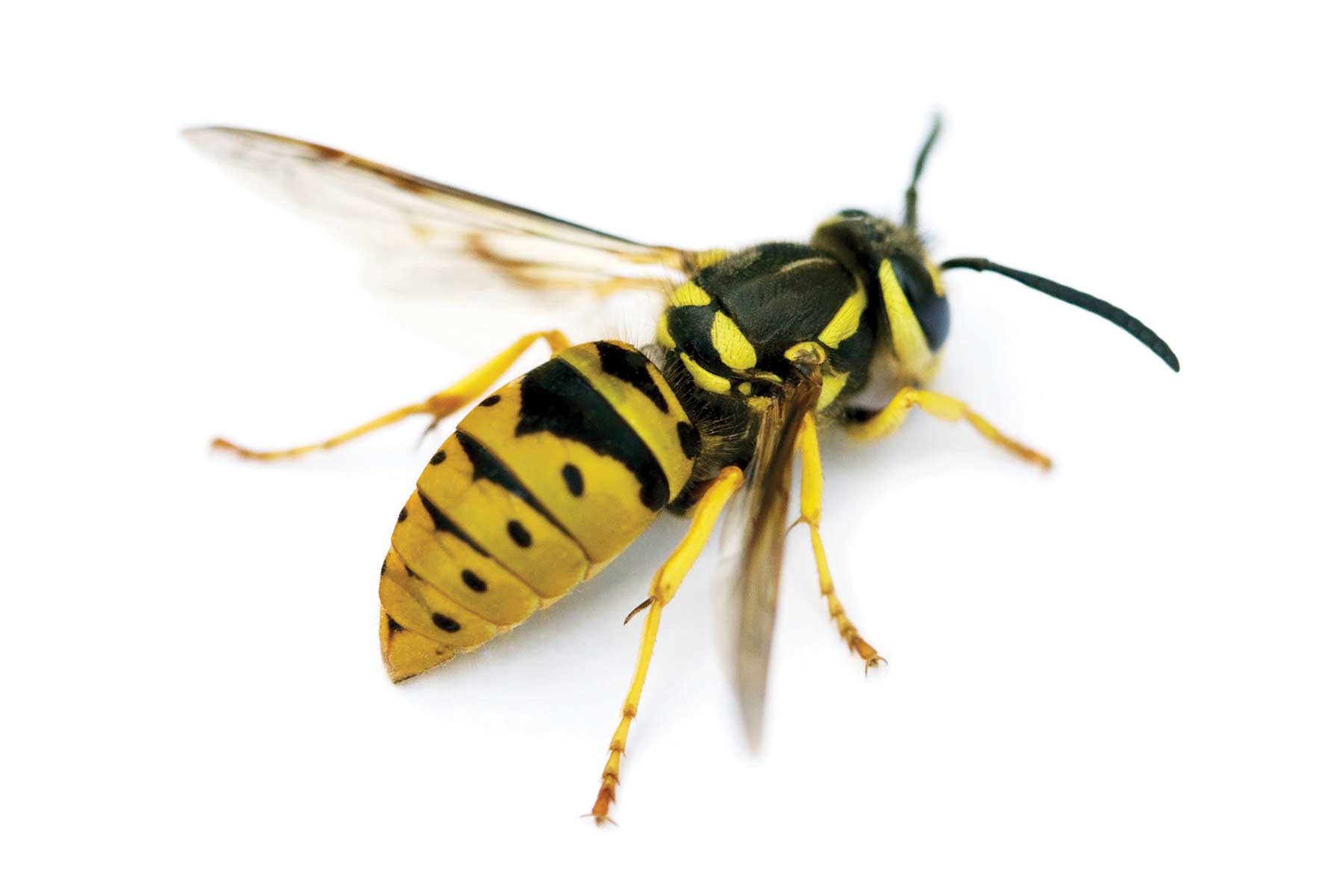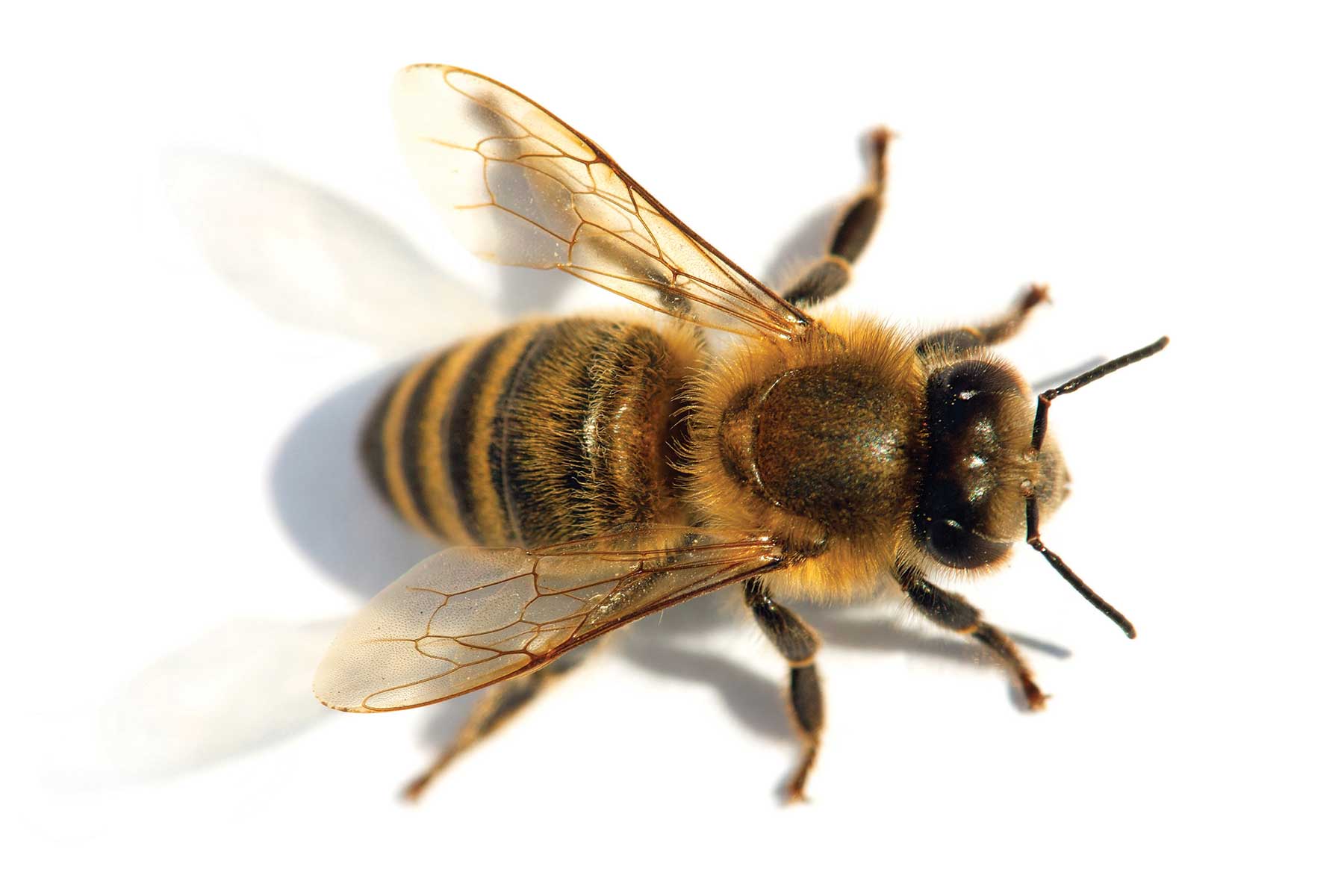WILDLIFE
Wasp, Bee or Hornet?
While we focus on filling our yards with pollinator plants, it’s good to know who’s buzzing around and occasionally giving us a sting. No more guessing; here are some characteristics to help you distinguish wasps, bees and hornets, all of which belong to the order Hymenoptera. Fun fact: A honeybee produces only 1/12 teaspoon of honey in its lifetime.

Photo © Melinda Fawver / dreamstime.com
WASP
• Smooth body, slender waist
• Waxy, cylindrical legs
• Smaller colonies
• Nest generally made from chewed wood and saliva
• Can sting multiple times, more likely to sting us than bees (only females sting)
• Prey on other insects

Photo © Daniel Prudek / dreamstime.com
BEE
• Fuzzy, round, robust body
• Hairy, flat legs
• Big colonies
• Nest made from beeswax
• Honeybees have barbed stinger that sticks in flesh (die when they sting us)
• Interested mostly in pollen/nectar collection

Photo © Melinda Fawver / dreamstime.com
HORNET
• Actually a type of wasp
• Only one variety — the baldfaced hornet — known to exist in Texas
• Nests high in trees
• Term "hornet" often used incorrectly to describe other wasps
• Less aggressive than other wasps since their nests are more remote
» Like this story? If you enjoy reading articles like this, subscribe to Texas Parks & Wildlife magazine.
